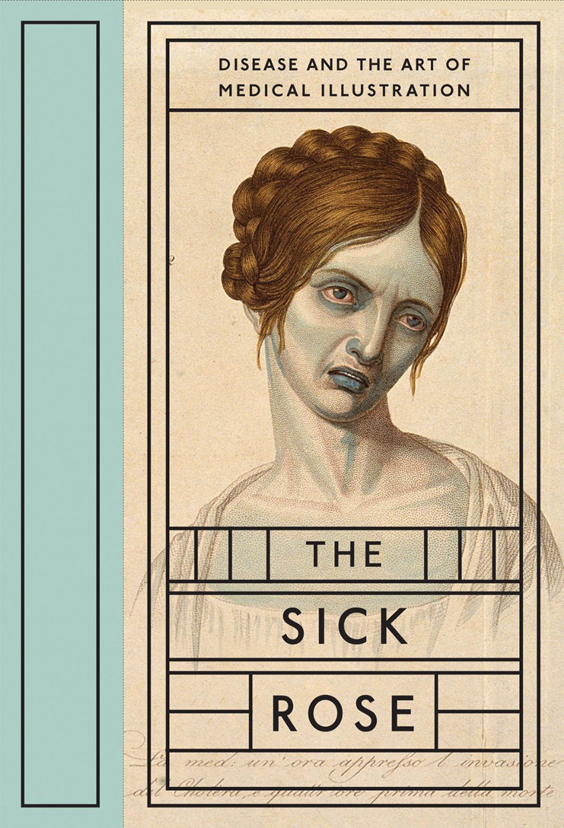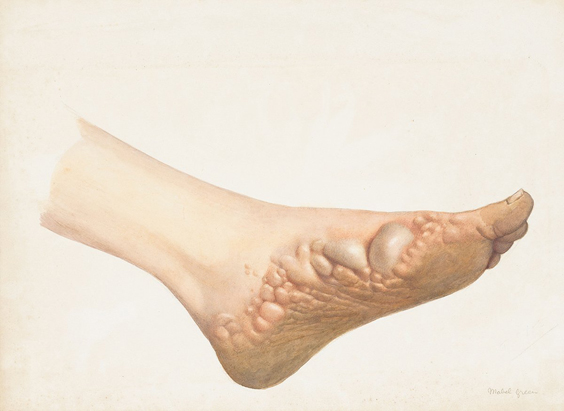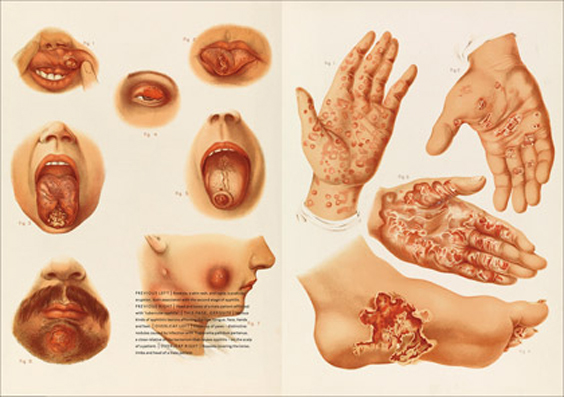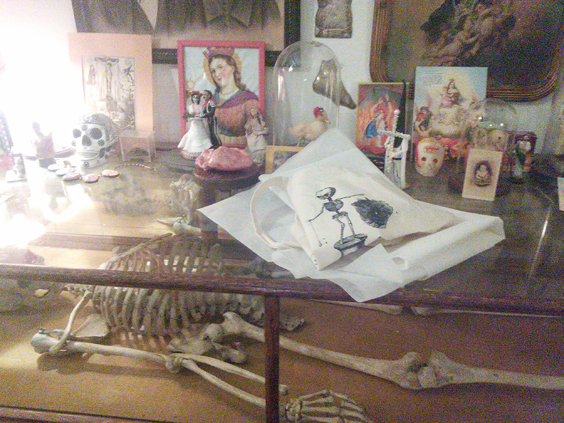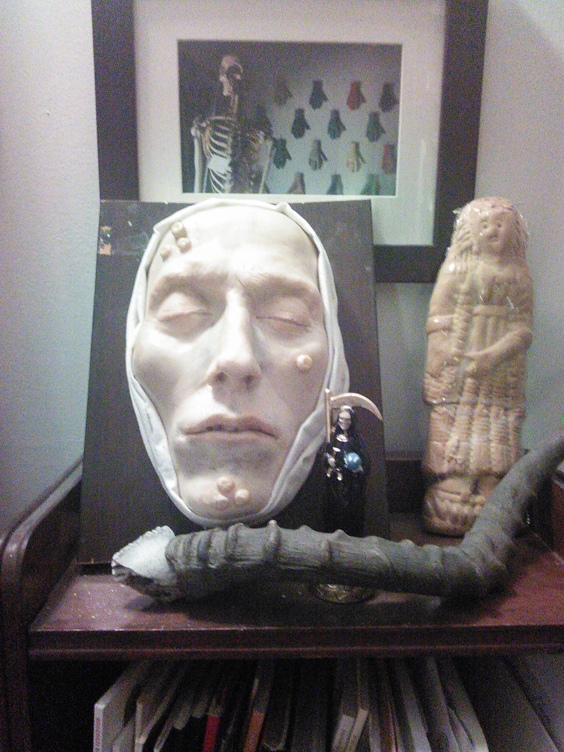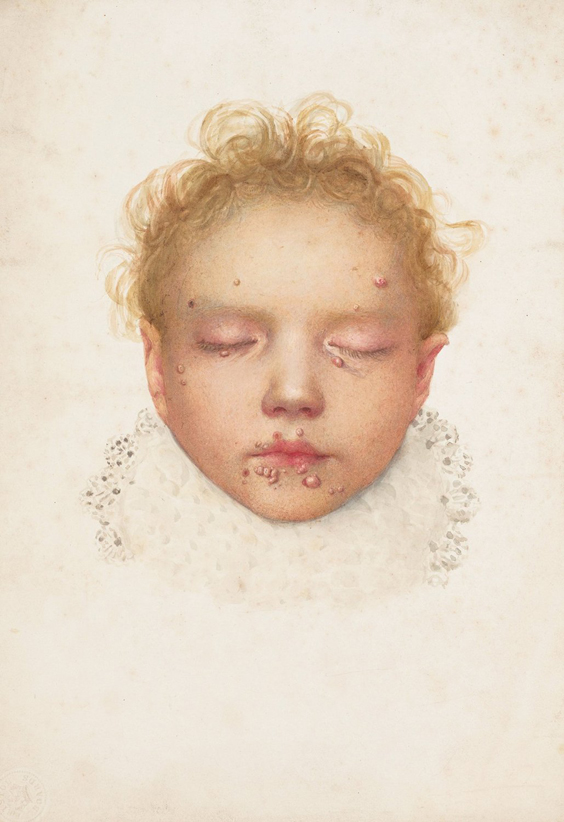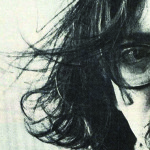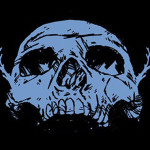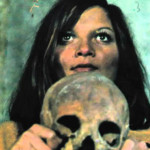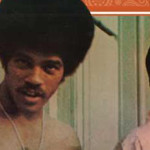A Q&A with Richard Barnett
On April 17th of this year, London-based historian, teacher, Wellcome Trust Fellow and author Richard Barnett launched his latest book The Sick Rose: Disease and the Art of Medical Illustration at New York’s Morbid Anatomy Library, where he was serving as visiting scholar-in-residence. Barnett’s book contains nearly 300 pages of intricate, beautifully rendered illustrations of an array of diseases as depicted in an era predating colour photographs. With their attention to detail, the images not only have the potential to inspire shock and awe, but also stand alone as portraits. The Sick Rose is a book that also raises questions that cross lines into history, art, politics and medicine; a particular stew that forms the basis of much of Barnett’s work.
What began as a career in forensic pathology moved into a focus on the history of medicine as Barnett proved an avid explorer of the mysteries of the past. His first book Medical London: City of Diseases, City of Cures was published by Mark Pilkington’s Strange Attractor Press in 2008, and since then his writing has appeared in the London Review of Books, the Lancet, Strange Attractor, and The Natural Death Handbook. Spectacular Optical spoke to Barnett about what inspired him to create this book of grotesque beauty.
———————-
Esinam Beckley: Where do all of these illustrations come from?
Richard Barnett: Well they all come from the Wellcome Library’s collection. Where they came from before that depends. A lot of them come from 19th century text books. The majority of them probably do. Some of them are watercolors made by doctors or artists in hospitals recording particularly unusual or interesting cases. Some of them are sets of decorative prints that were to be put up in museums. What they all have in common is that they are handmade images. This is not a book about photography. This a book about the age before photography. So what they embody is a collaboration. There is an interesting point here about objectivity. These images are trying to be objective. They are trying to eliminate bias and interference, and yet they are a product of it. If you think about one of these images you need an anatomist, an artist, an engraver, a colorist, a printer, a publisher, and then you need the reader of course to interpret it. So there are fascinating questions here about the nature of objectivity and how objectivity gets mediated. How do you preserve the idea of objectivity when an image has so to speak passed through so many sets of eyes, and minds, and hands?
EB: It seems the drawings all have a similar style – was there a main artist or a secret moonlighting doctor?
Barnett: No, one of the things that is interesting is that this is really a book about people we don’t know very much about. We know the names of many of the doctors whose names appeared on the title pages of the books. In many cases we don’t know the names of the artists, and that is fascinating. They become (to borrow a phrase from sociology) ”They become invisible technicians.” People who sort of have to be erased from the story to create a notion of objectivity. Part of what we were trying to do was to show the breadth of the Wellcome Collection. We tried to get in as many different images as we could. The other great anonymous group in here are the people depicted themselves. I can count on one hand the number of names of the patients in this book. The vast majority are anonymous. Many of the images have been made from bodies, or parts of bodies after death. So there are fascinating questions here about identity. Again, about how you make objectivity by leaving out the individual.
EB: At one point you started thinking about health and disease from a completely different direction. What exactly inspired this change?
Barnett: It was a number of different things, I started off in medical school wanting to be a forensic pathologist and really found myself frustrated in lots of ways. It was partly a question of narrowness. Something medicine is quite good at (at least in Britain) is taking well rounded people and squashing them so they can become something of a sort of machine. I could see that happening to a lot of my friends, and I could see that happening to myself. I found in the midst of all this many questions arising about the history of where does it come from? Why do we think in the way that we do? Why do we understand the body in the way that we do? And in the standard course of a medical education there is no real time to answer that. At the same time I discovered history of medicine, I was lucky enough to get a little money from the Wellcome Trust to study the history of medicine for a year. That just offered me all the answers, or at least offered me a new way of asking these questions. It seemed that the perspective of history, the perspective of distance and time, especially setting medicine in a kind of cultural context, seeing its connections to science, to politics, things like that, really blew the subject open in ways I found particularly fascinating. That’s not to say I would reject medical education as it were, many of the people I admire most stayed on in medical school, and are now very fine doctors, but I found I couldn’t answer the questions I wanted to answer without going outside medicine.
EB: You mention you started off wanting to be a forensic pathologist. Why this in particular?
Barnett: There is actually a family connection to a fairly famous British pathologist who was working in the 50s and 60s. I read his book when I was eight or nine. He died quite a while before this, but I read his book and was – just as one would be at that age – overwhelmed by it. It was just fascinating. I always loved the idea of inquiry. Forensic pathology presented a sort of Sherlock Holmes kind of inquiry. Looking at clues, constructing a story or reconstructing a story. Trying to work out what happened. Those are the same basic questions that historians ask all the time. I think in some ways I can see my later career embedded in the questions that I was thinking about when I was seven or eight or so.
EB: Have you by any chance gotten to visit the body farm in Tennessee?
Barnett: I have not, but I’ve heard a great deal about it. It sounds an intriguing place, and in a sense so much has been said and written about it. I’m sure I could not have added anything to what people who have visited it have actually said, but yes, it sounds like an astonishing place. I’m particularly interested in the people who donate their bodies to it. I find it to be a fascinating decision. It strikes me as an incredible vulnerability in some ways, to allow someone to witness the degradation of your body in that way. I mean it’s an incredibly generous thing to do, but it’s a remarkable kind of courage in the face of vulnerability to do something like that.
EB: The Morbid Anatomy Library is an incredible place, it covers so many areas of history. It seems to cater into exactly your area of study. How did you come into contact with this museum?
Barnett: The Morbid Anatomy Library is currently in the process of being moved to a permanent site. It’s going to become the ‘Morbid Anatomy Museum’ that will be opening very shortly. The library is the creation of Joanna Ebenstein who is a curator and an artist. She’s fascinated in the boundaries between death, art, culture, science and medicine. Funny, we were talking about this just the other day. We’ve known each other for some years, but can’t exactly remember how we met! It would have been through the Wellcome Trust in London, I imagine. They found a great deal of work in this field so most of the people who are interested in medical history and medical humanities, art and medicine, art and death, all these people kind of pass through at some point or another. I wrote a book some years ago all about the history of medicine in London and Joanna enjoyed that. I was a great admirer of her work, so it’s been a sort of gradual process of mutual admiration really. Joanna was in London last summer. We were talking about her work and mine, and how we wanted to try and find a way to work together. This just seemed like a great opportunity. For the last few years I’ve had what’s called a ‘Wellcome Trust Engagement Fellowship’ and I don’t really know what that means, but it provides a great deal of freedom to travel, to write, to broadcast and research. There are really very few places – if any – in the world as good as the Morbid Anatomy Library. Not just the place, but the community that surrounds it. There is a great spirit of democratic and passionate inquiry in this place which I thoroughly admire.
EB: Where do you think the spirit of such inquiry comes from?
Barnett: It’s curiosity and I think a desire to start talking about death again as well. To find new ways to talk about it. In some ways I think the great question that Joanna is trying to answer is: How do our views toward death change? How do we think about it in present day culture? It’s very easy to talk about death as repressed, to think that we don’t talk about it. I don’t think that is true. Joanna and I think there’s so much death present in culture. Actually, in popular culture. So this is really just a chance to interrogate that, think about it and hopefully come up with new answers.
EB: You advised on the curating and restoration of one of the only surviving mid-19th century operating theaters in Britain – The Peterborough Museum. How did that come about?
Barnett: I received an email out of the blue. The Peterborough Museum is lodged in one of the oldest surviving 19th century hospitals in Britain. They discovered in the course of restoring it, that one of the rooms in the hospital had been an operating theater. Crucially, it hadn’t been changed very much. There are a number of operating theaters and dissection theaters surviving around Europe, going back in some cases to medieval times. What we don’t tend to have are theaters dating from the great time of surgical revolution. From the middle of the 19th century you have anesthesia, you have the look of the operating theater changing. It goes from just being a blood stained space with sawdust on the floor, to something like a modern bathroom, you know with white tiles, a sort of cleanliness with stainless steel and that sort of thing. So this was really a remarkable chance to be involved in preserving that. Also, crucially, to think about how you present that to the public. In some ways it could be described as being a rather plain space. It’s a white room with white walls. So the question was how do you bring that story to life? We found some great ways to do that. They have saws and amputation kits. Also they have medical records, so you can bring the voices of patients’ histories to life. It’s really an excellent place, I have to say.
EB: How did you come up with the idea for the guided tours – the ”sick tours”?
Barnett: They are tours of London. I’ve been doing them for eight or nine years. It all came about because of the Wellcome Collection. It’s a gallery and exhibition space. Being located in London when they opened, they wanted to commission a book that would sort of set out their vision of history and connect them to London. So this is the book I mentioned earlier, Medical London. As part of that they asked me to write some guided tours around things like the great plague, or what it was like to be a medical student in the 18th century in London, or Bohemian medicine in Chelsea, all this sort of thing. I had taught before this and I loved teaching. This was something new. It was great to bring in those insights and bring them alive on the streets of London. To tell stories and to connect to things people hadn’t necessarily thought about, and to do it in sort of the greatest backdrop in the world (London is just a magnificent place to walk around). It was really a way for me, through exploring the cultural history of medicine, to bring it to life. You can connect not just doctors, patients, surgeons, drugs and so on, but also life, death, health, disease, the body, geography – and it’s really just fun.
EB: Where is it that you think all of this comes together? What do you consider the root of all your areas of study?
Barnett: It’s very difficult to pick one thing. Maybe this is something a psychiatrist should answer rather than me. I think it is a fascination with the mysteries of the past. A great pleasure I’ve always taken in mixing things together. The great joy of doing the history of medicine for me is that it’s the history of human life. It’s the question of how we live in our bodies. How we contemplate death. How we sort of try to fight, or repel, or come to terms with death. So I think that is the appeal of this for me. It’s a way of bringing together everything that strikes me as interesting and important in the world. It is also a way I suppose of having one foot in literature, art, and humanities, and another foot somewhat in science as well. The joy of history of medicine and history of science of course, is that you combine all the world’s scholarship – and that to me makes it the best place in the world to teach, write, and think.
EB: What do you think is the relevance of a record of this kind of knowledge? How important is it to keep this going, to make sure there is a legacy of it?
Barnett: I think firstly there is an abstract value. I see knowledge as being valuable whether or not it serves a practical purpose. I think there is a bigger audience for this than one would imagine. I think part of the purpose of The Sick Rose in fact is to take the Wellcome Library’s collection of stock historical images to a broader audience, but to do it in such a way that treats the material with dignity and respect. It would be very easy to take these pictures and just to tweet them or send them around out of context. They are sort of gory and slightly kitschy images. The one thing about the book is that there are so many stories these images tell. They bring to life an entire century. They bring to life the great transformation in Western medicine as it moves from understanding the body as a sort of sacred microcosm of God to the scientific view of the body as essentially a materialist system of organs and tissues and chemicals. But it also tells the story of relationships between doctors, patients, and nurses. How status and power has changed. The story of imperialism is in here. In 19th century Europe, in America, going around the world encountering new cultures, encountering new diseases. Encountering new people trying to understand the difference between the people we meet in Papua, New Guinea and the people we meet in Brooklyn, as it were. I think as well there is an undertone – an underrated undertone – in these images of aesthetics as well. What I found most fascinating, what really grabbed me, was the way these pictures have become portraits. If you take the cover image for instance, there is far more there than you need for medical purposes. The hair is beautifully drawn. There is careful attention paid to pose, to shading and that sort of thing. So there’s a fascinating collision between art and science. Between anatomy and craft. I think what makes the book worthwhile is to draw out these connections to show that knowledge never exists in isolation. Whether it’s in the nineteenth century or in the 21st century. Culture always gets into science. Science always gets into culture. And this book tries to fit somewhere in the middle.
BUY ‘THE SICK ROSE’ direct from Thames and Hudson HERE or from Amazon HERE

 May 23, 2014
May 23, 2014  No Comments
No Comments
